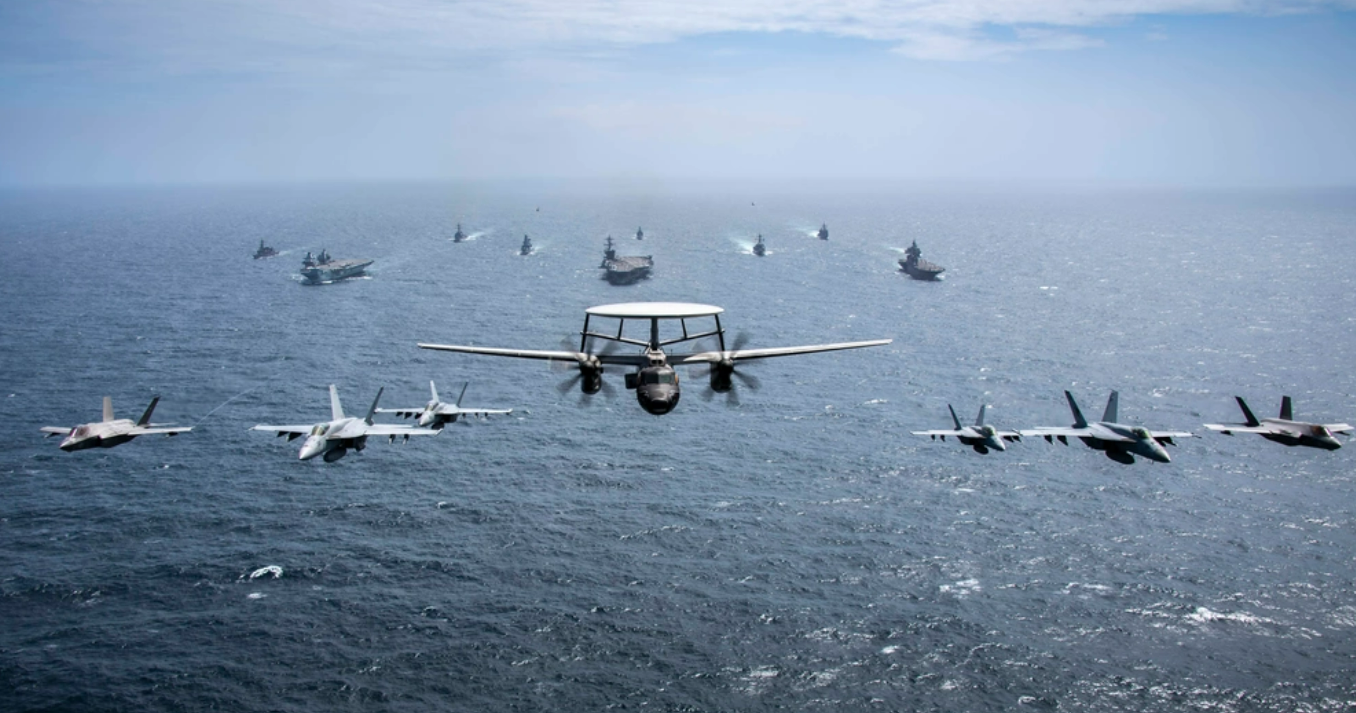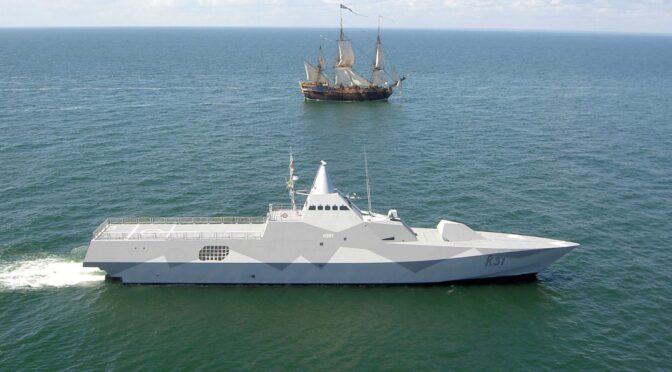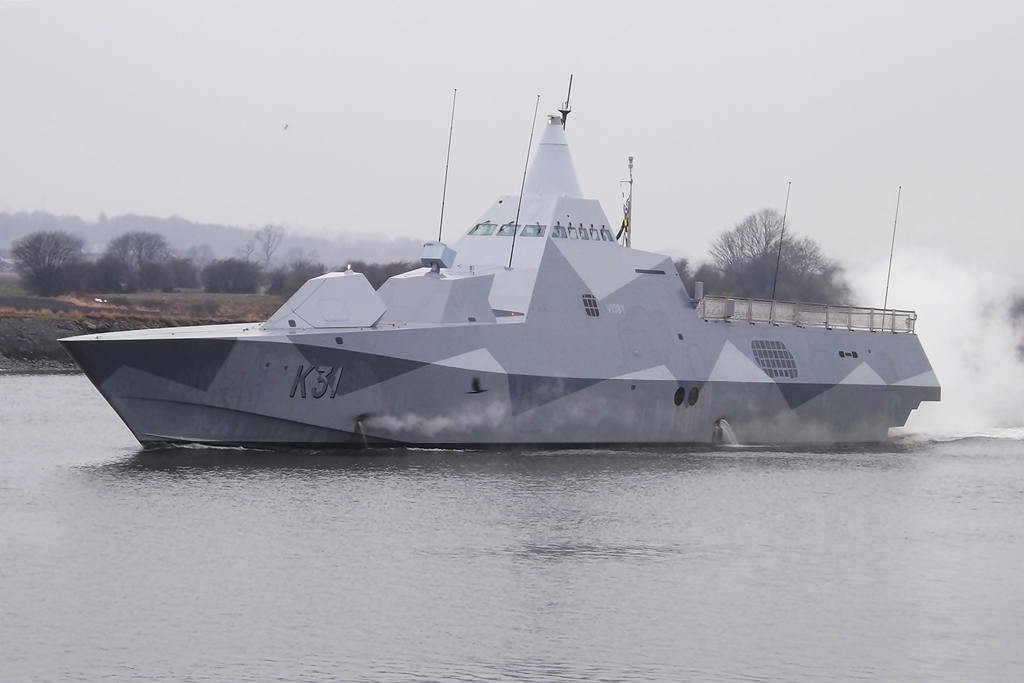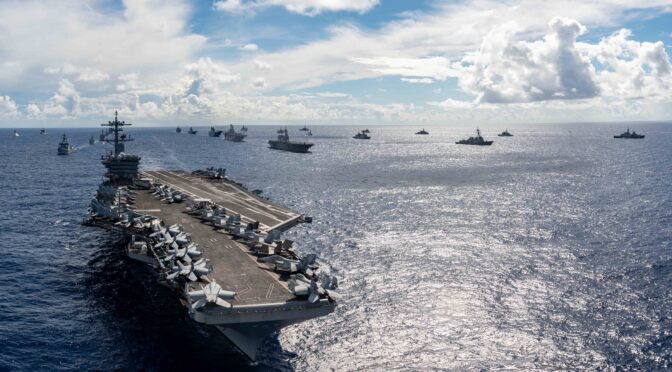By Blaine Worthington
The United States has a shipping problem and everybody knows it. From combatant commands to congress and maritime security outlets to the White House, everyone is talking about America’s lack of maritime capacity.1 America, it seems, is waking up to its maritime problem and is ready to roll up its sleeves and start solving it in the only way it knows how—mostly alone. While there have been some nods to bilateral cooperation in shipbuilding, the United States has not made a concerted effort toward a robust, multilateral counter-China maritime strategy. That needs to change. A coordinated, multinational approach is required to counter Chinese shipping dominance. The US and its allies should form a Multilateral Maritime Alliance to secure maritime trade and create critical sealift capacity to sustain expeditionary combat operations.
The crux of the problem is that the United States cannot compete with Chinese shipping or shipbuilding. The United States flagged merchant fleet currently sits at 185 ships.2 China (including Hong Kong) has a fleet of 7,838.3 In 2023, the United States built 0.1% of the world’s ships. In the same year, China built 50.7%.4 In 2024, 2.16% of the global merchant fleet was owned by US companies. China owned 19%.5 The scale of China’s shipping and shipbuilding advantage gives it tremendous economic leverage over the United States during peacetime. At the same time, this lack of domestic shipping means the United States does not have a merchant marine robust enough to support sustained expeditionary combat in the event conflict with China.6 It is understandable that the United States wants to rebuild its maritime sector. It must, and it must do it quickly.
The United States is not alone in this situation, however. Its close friend and ally Australia suffers from a similar ill. As Canberra-based maritime expert Richard Dunley has noted, “99 per cent of Australia’s trade moves by sea, supporting 45 per cent of the country’s national income. And virtually all of this travels in foreign flagged and foreign owned vessels. In 2021, 6,170 individual foreign flagged vessels called at Australian ports. By contrast, there are only four Australian flagged vessels on international trade and these are LNG carriers, exporting Australian hydrocarbons to customers in north-east Asia.”7
This situation is not lost on the Australian government either. Prime Minister Anthony Albanese and the Labor Party made the development of a “Strategic Fleet” of privately owned and Australia-flagged merchant vessels a plank of the party platform during the 2022 election.8 In 2023, the Albanese government released a report detailing the scale of the problem and proposing many solutions similar to those now on offer in the United States, including government subsidies, cargo preference measures, and maritime workforce development efforts—largely measures aimed at bolstering domestic capacity.

These efforts, like their American counterparts, will take many years, if not decades, to take effect, however. There is no switch to flip that will suddenly cause shipyards to spring up, full of trained and qualified workers, with healthy, consistent, reliable demand for ships operated by American or Australian crew while relying solely on domestic solutions. As the Davidson Window – the most likely window in which China might attempt to take military action against Taiwan – closes and the clock ticks down to 2027, there simply is not enough time to wait for the domestic industry to come online.9
If a domestic ramp-up cannot provide an immediate solution, the obvious answer is to look abroad. In the United States, this effort has focused on the shipbuilding side of the coin. In recent testimony, Congressional Research Service analyst Ronald O’Rourke typified this perspective by highlighting US allies in Japan and South Korea as obvious partners to address US shipbuilding needs.10 Australian officials seemed to have reached a similar conclusion in strongly considering the Japanese Mogami-class frigates in their upcoming procurement.11 These solutions, however, leave two problems remaining. First, all Japanese and South Korean shipyards are within China’s Weapons Engagement Zone (WEZ). This is a concern not just for the US and Australia, but also for Japan and Korea, who would need access to shipyards with some standoff from China in the event of conflict. Second, even if shipbuilding partnerships can be achieved in the medium term, the United States and Australia will still lack sufficient sealift capacity to compete with China in the immediate term.12
To solve these problems, the United States and Australia should engage with their regional partners in South Korea, Japan, and the Philippines—who have been partnering with the Koreans to develop their own shipbuilding prowess—to create a counter-China maritime bloc: the Multilateral Maritime Alliance (MMA). The MMA would achieve the following objectives:
1. Establish economic incentives to promote sea trade via vessels owned or flagged within the MMA, protecting market access for domestic shippers and breaking Chinese economic leverage over member states.
2. Formalize cooperation amongst MMA members to develop shipbuilding and shipping capacity in Australia and the United States, establishing robust and redundant allied maritime capacity outside the WEZ.
To achieve the first objective, the MMA should negotiate collective cargo preferences, port privileges, and trade incentives to immediately shift demand away from Chinese carriers. Many countries, the United States included, maintain cargo preference policies, which are designed to ensure demand for domestically flagged shipping. Under the MMA, similar preference policies would be shared amongst MMA countries. Collective preferences could include requiring that a percentage of all imports or exports be carried on MMA shipping, providing front-of-the-line privileges for MMA ships in ports of member states, and the blanket reduction or elimination of import tariffs on all goods shipped via MMA shipping. If necessary, the MMA could even resort to establishing shipping quotas to be shared by participating countries to ensure all members have an opportunity to develop and sustain their domestic industries. By coordinating cargo preferences and other incentives, the MMA immediately counters China’s maritime dominance—dominance obtained by decades of subsidies, artificially low freight rates, and unfair labor practices.13 Breaking China’s grip on maritime trade is a necessary condition for future domestic investments in shipping and shipbuilding to be globally competitive.
For the second objective, the MMA can create formal dialogue between countries to allow for the strategic planning and coordination of shipbuilding and repair capacity development. While many of these discussions are already occurring on a bilateral basis, the MMA would ensure that these existing actions are undertaken thoughtfully, do not unwittingly compete against each other, or otherwise compromise the strategic integrity of this shipbuilding or repair capacity. The MMA would effectively serve as an industrial alliance, similar to those found in the European Union. These alliances bring together academia, policymakers, and industry to coordinate policy and investment to achieve strategic ends by finding opportunities for collaboration at all levels of the value chain.14 This could build on cooperative efforts such as the production of Virginia-class submarines under AUKUS or the potential Mogami-class procurement project between Australia and Japan. MMA collaboration could generate opportunities to jointly design, procure, and build future ships in ways that allow each member state to strategically contribute to the supply chain. Additionally, the MMA could allow for the development of formal technical and workforce exchange programs that would enable US and Australian workers and management to work alongside their Korean and Japanese counterparts to develop expertise in current best practices and bring these skills back to their home countries. It would also allow for Korean, Japanese, and Philippine workers with shipbuilding experience and expertise to travel to the US or Australia to seed their nascent workforces and provide immediate access to the skilled labor necessary to ramp up shipbuilding and repair capacity beyond the WEZ.
These solutions are not intended as a replacement for efforts currently underway in the United States or Australia. These efforts to develop their respective domestic maritime sectors must continue. However, purely domestic efforts to rebuild the industry will take time that neither country can afford, and bilateral efforts fail to effectively address the scale of Chinese anti-competitive practices and the strategic vulnerability created by further concentrating capacity inside the WEZ. The MMA, however, will set conditions to allow those domestic investments to be competitive in the long term by breaking the Chinese stranglehold on the shipping industry in the short term. It also formalizes strategic cooperation among all parties to ensure that collective risks are mitigated with collective solutions.
Finally, this civil maritime coordination will lay the foundation for further cooperation between member states in the event of conflict with China, when the demand for sealift will be acute, and all parties will have a role to play in meeting that need. The time for unilateral and bilateral action has passed. The United States, Australia, South Korea, Japan, and the Philippines should form the Multilateral Maritime Alliance now and break the Chinese stranglehold on maritime industries—before it is too late.
Blaine Worthington is a graduate student at the UC San Diego School of Global Policy and Strategy. He is a graduate of the US Naval Academy and served as Logistics Officer in the United States Marine Corps and continues to serve as a member of the Marine Corps’ Independent Ready Reserve. Opinions expressed are his own and do not represent the positions of any institution, corporation, or government.
References
1 Mallory Shelbourne, “PACFLEET CO Warns a Weak Maritime Sector Risk in Conflict with China,” USNI News (blog), February 1, 2024, https://news.usni.org/2024/02/01/pacfleet-co-paparo-warns-a-weak-u-s-maritime-sector-risk-in-conflict-with-china; “Sen. Kelly, Sen. Young, Rep. Garamendi, Rep. Kelly Introduce SHIPS for America Act to Revitalize US Shipbuilding and Commercial Maritime Industries,” Senator Mark Kelly (blog), December 19, 2024, https://www.kelly.senate.gov/newsroom/press-releases/sen-kelly-sen-young-rep-garamendi-rep-kelly-introduce-ships-for-america-act-to-revitalize-us-shipbuilding-and-commercial-maritime-industries/; Cmdr. Sonha Gomez, USCG, “Rebuild the Merchant Marine,” Proceedings 150, no. 10 (October 2024), https://www.usni.org/magazines/proceedings/2024/october/rebuild-merchant-marine; Cmdr. Ander S. Heiles, USN, “Rebuild Commercial Maritime Might to Restore U.S. Sea Power,” Center for International Maritime Security, January 31, 2025, https://cimsec.org/rebuild-commercial-maritime-might-to-restore-u-s-sea-power/; Mallory Shelbourne, “Trump’s ‘Make Shipbuilding Great Again’ Order Calls for Wholesale Overhaul of U.S. Maritime Industry,” USNI News (blog), March 5, 2025, https://news.usni.org/2025/03/05/trumps-make-shipbuilding-great-again-order-calls-for-wholesale-overhaul-of-u-s-maritime-industry.
2 “Number and Size of the U.S. Flag Merchant Fleet and Its Share of the World Fleet,” Bureau of Transportation Statistics, accessed February 25, 2025, https://www.bts.gov/content/number-and-size-us-flag-merchant-fleet-and-its-share-world-fleet.
3 “Merchant Fleet by Flag of Registration and by Type of Ship, Annual” (UN Trade & Development, June 5, 2024), https://unctadstat-api.unctad.org/bulkdownload/US.MerchantFleet/US_MerchantFleet.
4 “Ships Built by Country of Building, Annual” (UN Trade & Development, June 5, 2024), https://unctadstat.unctad.org/datacentre/reportInfo/US.ShipBuilding.
5 “Merchant Fleet by Country of Beneficial Ownership” (UN Trade & Development, June 5, 2024), https://unctadstat.unctad.org/datacentre/reportInfo/US.FleetBeneficialOwners.
6 Shelbourne, “Maritime Sector Risk.”
7 Richard Dunley, “Australia Needs to Resource a Merchant Fleet,” The Interpreter, November 14, 2023, https://www.lowyinstitute.org/the-interpreter/australia-needs-resource-merchant-fleet.
8 “Labor Will Create a Strategic Fleet to Protect Our National Security and Economic Sovereignty,” Anthony Albanese, PM, January 3, 2022, https://anthonyalbanese.com.au/media-centre/labor-create-strategic-fleet-protect-national-security-economic-sovereignty.
9 “CNO Remarks at America’s Future Fleet: Reinvigorating the Maritime Industrial Base,” United States Navy, accessed March 12, 2025, https://www.navy.mil/Press-Office/Speeches/display-speeches/Article/3986010/cno-remarks-at-americas-future-fleet-reinvigorating-the-maritime-industrial-base/https%3A%2F%2Fwww.navy.mil%2FPress-Office%2FSpeeches%2Fdisplay-speeches%2FArticle%2F3986010%2Fcno-remarks-at-americas-future-fleet-reinvigorating-the-maritime-industrial-base%2F.
10 Chris Panella, “Naval Affairs Specialist Says Pacific Allies Might Just Have Answers to US Shipbuilding Problems,” Business Insider, accessed March 13, 2025, https://www.businessinsider.com/pacific-allies-may-have-answer-to-us-navy-shipbuilding-problem-2025-3.
11 Nishank Motwani, “Strategic and Industrial Factors Favour Japan for Australia’s Frigate Project,” The Strategist (blog), February 27, 2025, https://www.aspistrategist.org.au/strategic-and-industrial-factors-favour-japan-for-australias-frigate-project/.
12 Shelbourne, “Maritime Sector Risk.”
13 “Report on China’s Targeting of the Maritime, Logistics, and Shipbuilding Sectors for Dominance,” Section 301 Investigation (Washington, D.C.: Office of the U.S. Trade Representative, January 16, 2025), https://ustr.gov/sites/default/files/enforcement/301Investigations/USTRReportChinaTargetingMaritime.pdf.
14 “Industrial Alliances,” European Commission, accessed March 2, 2025, https://single-market-economy.ec.europa.eu/industry/industrial-alliances_en.
Featured Image: BATH , Maine (Dec. 14, 2012) The 1,000-ton deckhouse of the destroyer USS Zumwalt (DDG 1000) is craned toward the deck of the ship to be integrated with the ship’s hull at General Dynamics Bath Iron Works. (U.S. Navy photo)






